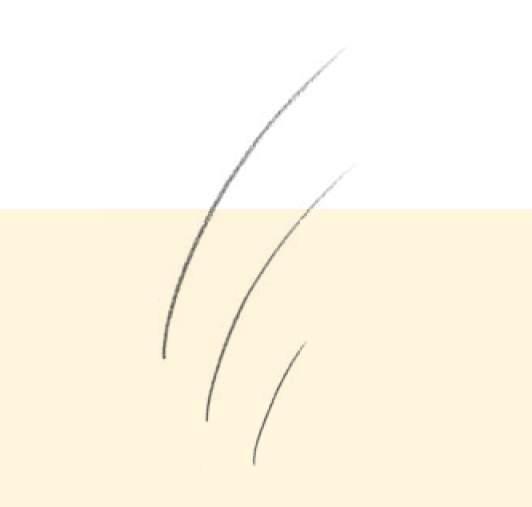
Plants can grow and germinate even in the dark if they can mobilise sufficient nutrients from the soil, from the water or from their own storage organs. Light, even from a biological perspective, does not directly set growth in progress but acts on the plant like a signal, starting and limiting it. Light is absorbed in the seedling by receptors (phytochrome proteins), which regulate other processes, such as greening, flowering and above all shape changes. According to existing research, shoots become longer, weaker, spread out less in the surroundings and in the short-term also grow much faster if they permanently lack usable light. All parts of the plant that have developed in darkness appear softer and more pliable than those grown in brightness. The leaves are often undifferentiated, thinner, small like scales and pale. At the same time the pole opposite the shoot, the root, grows less well. Plants grown entirely without light show that light is necessary for firm uprightness and to form inner structures, for natural proportions, harmonious forms and variety of colours. Just a few minutes of daily light exposure steers development again to a by and large normal plant-shape.
Light ether
The plant adorns itself with light so that it itself becomes a specific expression of light. The light ether shines out of the cosmic surroundings, it gives the plants their beauty. In shining out of the cosmic surroundings the light ether builds no fixations in a material ground or in a material form. If one wants to draw it, one must start out from a cosmic feeling and imagine a wide open space. The drawer must not get into a fixation with his pencil; in a sense free from the body, free from tensions and constraints, he must enter entirely into a free sketching of rhythmical, animated and radiating lines. These lines become more elegant the less the drawer fixes upon himself.
The light ether, which shines out of cosmic space, limits the plant, it forms out of the surroundings the most delicate limiting touches. With these limitations it creates, however, a wondrous crystal-clear structure, which makes new growth possible. For this reason the polarity of limitation and crystal-forming growth can again be experienced. Again in the ether two completely contradictory poles are connected with each other through a mutually dependent moving principle: These are limitation and growth.

It is not that the sun nourishes the plant directly through its rays; it touches and limits it and yet a crystal-forming, new structure rises directly out of the surrounding conditions of light.